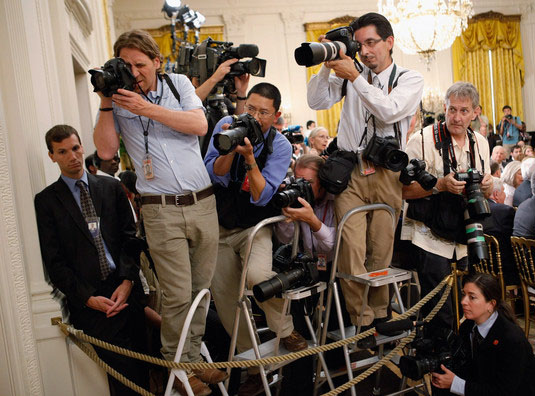Conference to examine presidency and the press in the digital age
A group of scholars and journalists whose experiences overlap the how and why of 21st century communications will examine the evolving nature of the presidency and the press at an all-day conference at SMU Tuesday, Feb. 17.

DALLAS (SMU) – A group of scholars and journalists whose experiences overlap the how and why of 21st century communications will examine the evolving nature of the presidency and the press at an all-day conference at SMU Tuesday, Feb. 17.

“From Columns to Characters: The Presidency and the Press in the Digital Age” is free and open to the public. Register here to attend any or all of the conference programs, including the keynote luncheon. The all-day conference begins at 8:30 a.m. in SMU’s Mack Ballroom in the Umphrey Lee Center, 3300 Dyer St.
The conference is produced in partnership with SMU’s Center for Presidential History, Cary M. Maguire Center for Ethics and Public Responsibility, and Meadows School of the Arts’ Divisions of Communication Studies and Journalism. The program is sponsored by The Dallas Morning News.
“Since the late 1990s the fundamental relationship between the presidency and the press has undergone dramatic change,” said CPH director Engel, who views that changing relationship through the lens of a historian as well as a frequent media source. “Reporting on the president has morphed in a relatively short period of time from lengthy columns and reports, that took time to draft and edit, to 140-character Tweets that pass from brain to fingertips to distribution in a matter of seconds. Can you imagine the Watergate scandal being reported using current media tools?”
This conference explores the effects of this digital reality on those who attempt to manage the communications of the president and those who challenge, interpret, and inform the world about the White House.
More information about conference participants.
Schedule of
"From Columns to Characters: The Presidency and the Press in the Digital Age"
| 8 a.m. | Guest Registration | |
| 8:30 a.m. | Welcome: Sandra Duhé, Department of Communication Studies, SMU | |
| 8:35 a.m. | Opening Remarks: “From Columns to Characters” Thomas DeFrank (Columns) and Olivier Knox (Characters) | |
| 8:55 a.m. | Panel 1:
|
|
| 10:30 a.m. | Panel 2:
|
|
| 12:05 p.m. | Luncheon Speaker: Frederick R. Chang | |
| 1:15 p.m. | Panel 3:
|
|
| 2:50 p.m. | Panel 4:
|
|
| 4:25 p.m. | Keynote Wrap-up Discussion:
|
|
| 5:30 p.m. | Program Concludes |
###
21189-nr-2/10/15-kc